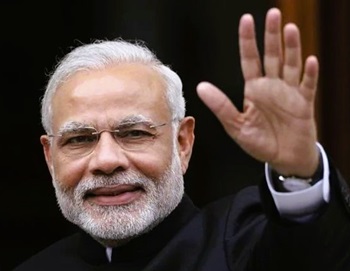Dec 05, 2025
Dec 05, 2025
How ‘Visionary Leadership’ Transformed India’s Soul
 India’s journey over the past eleven years stands as living testimony that leadership is not management — it is transformation. And few names have redefined the essence of leadership in modern India as profoundly as Prime Minister Narendra Modi.
India’s journey over the past eleven years stands as living testimony that leadership is not management — it is transformation. And few names have redefined the essence of leadership in modern India as profoundly as Prime Minister Narendra Modi.
The Power of Visionary Leadership
True leadership is not about holding office; it is about holding a mirror to a nation’s soul. It is about awakening self-belief in people who have been taught to doubt their own worth. For decades, India’s leadership was content with incrementalism — patchwork reforms, borrowed ideologies, and half-hearted visions that looked outward for validation rather than inward for inspiration.
Then came a leader who changed the grammar of governance and the vocabulary of vision. Modi did not merely speak of development; he embodied it. He did not just promise growth; he ignited faith. Under his leadership, India did not just chase progress — it redefined the meaning of progress itself, rooted in the timeless principles of Dharma, Swadeshi, and Atmanirbharta (Self-reliance).
From Dependency to Atmanirbharta: The Rebirth of Self-Belief
For centuries, India’s narrative was shaped by others — colonial rulers, foreign economists, global agencies, and imported ideas. But over the last decade, India’s script has been written by Indians, for Indians, and of Indians.
From the Make in India movement to Digital India, from Startup India to Vocal for Local, the message has been clear: self-reliance is not isolation; it is self-respect.
The world watched as India built its own vaccines, launched its own digital payment infrastructure, and became the pharmacy of the world — sending vaccines to over 100 countries at the height of a global crisis. That was not charity; that was leadership of compassion — the kind India has always symbolized through its sages, from the Rishis of the Upanishads to the reformers of modern times.
The economic story complements this moral renaissance. In 2014, India was the fragile fifth — vulnerable, volatile, and uncertain. Today, it stands tall as the third-largest economy, on course to becoming the world’s leading economy by 2047, when it celebrates 100 years of Independence. This is not just economic arithmetic — it is the alchemy of leadership.
Reclaiming the Civilizational Consciousness
Leadership, in its truest form, does not merely reform systems — it revives civilizations. Modi’s India is not a replica of the West; it is a rediscovery of the East.
The resurgence of pride in our sages, our Itihaasa, and our spiritual heritage marks a civilizational shift. India is once again reading its scriptures not as myth but as management; not as stories but as strategies. The teachings of the Bhagavad Gita, the discipline of Chanakya Niti, and the selfless spirit of Swadeshi have entered boardrooms, classrooms, and public consciousness alike.
Temples are being restored, forgotten heroes are being remembered, ancient knowledge systems are being revived, and Indian languages are being re-energized in academia and policy. This is not nostalgia — it is nationhood rediscovered.
Modi: The Architect of a New Indian Mindset
Great leaders change economies.
Exceptional leaders change mindsets.
Modi has done both.
He took a nation that once waited for foreign aid and turned it into a country that sends help to others. He took a set of people who once doubted their innovation and made them creators of the world’s fastest digital payment system. He took a country that once imported everything — from defense equipment to mobile phones — and turned it into a manufacturing hub of satellites, semiconductors, and solar power.
And perhaps his greatest achievement lies not in GDP numbers but in the inner transformation of the Indian mind. Today, Indians no longer look abroad for approval; they look within for answers. Pride is no longer seen as arrogance; it is seen as awakening.
Leadership Beyond Politics: A Dharma-Driven Vision
Modi’s leadership philosophy has always drawn from India’s civilizational ethos — where Rajadharma (the duty of the ruler) is not about power but about service. His governance is steeped in the idea that the leader is the first servant of the people — Pradhan Sevak, not ruler.
This is a leadership model that blends karma (action), yukti (strategy), and bhakti (devotion) — creating a new template for 21st-century governance that the world increasingly recognizes as the “India Model.”
A Nation Reborn, A Civilization Reawakened
From the ruins of colonial psychology, India has risen as a confident civilization once more. The mindset of dependency has been replaced by determination. The inferiority complex of centuries has been replaced by intellectual courage.
Whether it is the Chandrayaan-3 mission placing India on the moon, or the G20 presidency showcasing India as a global thought leader, the message is loud and clear — India is no longer a follower; it is a frontrunner.
Final Thoughts: The Age of Leadership – A New Dawn for Bharat
Leadership is the difference between motion and direction, between growth and greatness, between a nation that survives and a nation that inspires.
For the first time in independent India’s history, the people are not merely following a leader — they are becoming leaders themselves. From the farmer to the founder, from the soldier to the student, every Indian today stands taller, dreams bigger, and works harder — because their leader has taught them one profound truth: India’s destiny will not be written elsewhere — it will be written by Indians.
And as Bharat marches toward 2047, one question reverberates across its length and breadth:
If one man’s vision could awaken a billion minds in eleven years, what can a ‘billion awakened minds’ achieve in the next eleven?
18-Oct-2025
More by : P. Mohan Chandran